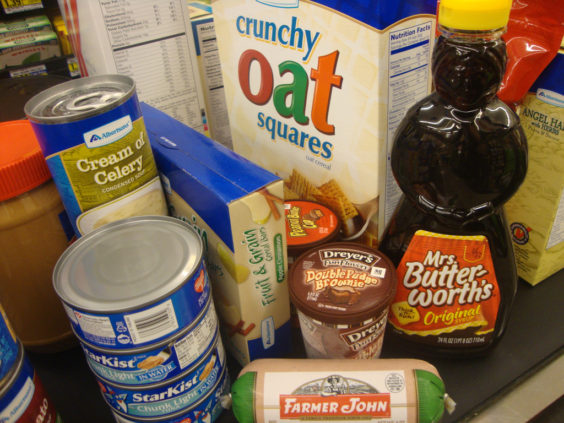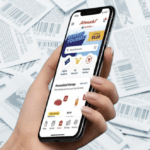
Many longtime couponers view digital coupons with a bit of suspicion. They may be convenient, and they may be the future, but there are drawbacks. Digital coupons can only be used once, they can’t be combined with other coupons, they don’t double, and you’re not always sure they’re actually going to work. Yet there’s one key measure where digital coupons may be superior to paper – digital offers are more likely to help put affordable food on your table.
All it takes is a look through your Sunday coupon inserts to see the story – food coupons aren’t nearly as plentiful as they once were. According to Kantar Media, only 31% of Sunday insert coupons last year were for food items, down from 41% just five years earlier.
But a new Kantar analysis shows that food coupons aren’t disappearing. Instead, they’re going digital.
In new research presented at last week’s Association of Coupon Professionals’ annual Industry Coupon Conference, Kantar revealed that digital is picking up paper’s slack, when it comes to offering savings on more than just toothpaste and detergent.
With paper coupons, the gap between the number of food and nonfood offers is widening. The number of print coupons distributed in 2015 was roughly the same as 2014 – but there were 2.8% more nonfood coupons and 6.5% fewer food coupons.
With digital, though, both categories grew. Nonfood coupons increased 7.6% over the previous year, while food coupons grew by a notable 20.2%. Breaking it down into specific food categories, the areas with the greatest decline in print saw the greatest increase in digital. Shelf-stable beverages, cereals and frozen products had far fewer print coupons available last year – frozen products alone fell by 18.5%. But those same categories had far more digital coupons available – 34% more, in frozen products’ case.
“There is a shift in strategy within the food sector, with all areas decreasing print promotion and increasing digital promotion,” the report reads.
Beyond just the availability of food coupons, digital is catching up to paper when it comes to the attractiveness of the offers. Paper food coupons still have longer expiration dates and higher face values, but the gaps are narrowing. The average face value of printed food coupons was $1.19 last year, compared to $1.11 for digital, but digital values are rising at a faster rate. Paper food coupons are valid for an average of 8.2 weeks, versus digital’s 5.9 weeks – but paper’s expiration dates are getting shorter, while digital’s are getting longer.
And if you want to try a new food product at a discount, you’re much better off going online than perusing your Sunday inserts. “Digital new products represented 80% of the total number of new product launches in 2015,” Kantar reported. There were 3,308 different digital coupons available for new food products last year, compared to just 476 paper offers.
It’s worth noting, of course, that paper coupons are still far more plentiful than digital. Kantar reports that digital coupon distribution grew 13.5% last year, reaching more than 6 billion coupons. But that’s a far cry from paper coupons’ reach of 289 billion. So while digital’s share of food coupons is on the rise, there are still actually more paper food coupons out there. Just not as many as there used to be.
So don’t cancel the Sunday newspaper subscription just yet. Digital coupons may be getting better, but paper is still king – for at least a little while longer.
















In the study, are printable coupons included as “digital” or “paper?” It seems they span the best of both worlds.
Good question – printables are considered “digital” in this study. The one place where they do compare printables and load-to-card digital coupons, shows that the value of printable food coupons is greater than load-to-card offers, and printables are also valid nearly twice as long.